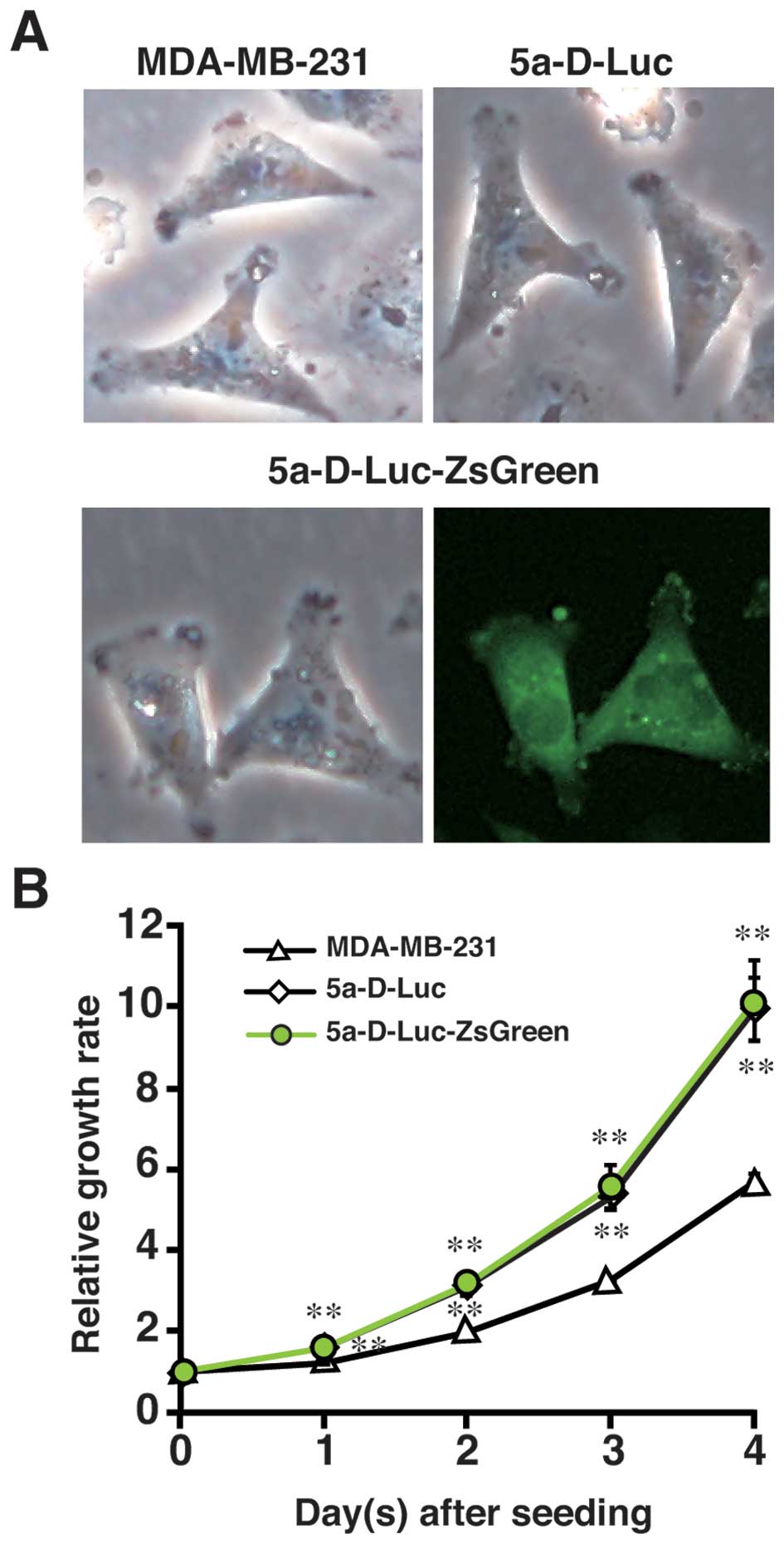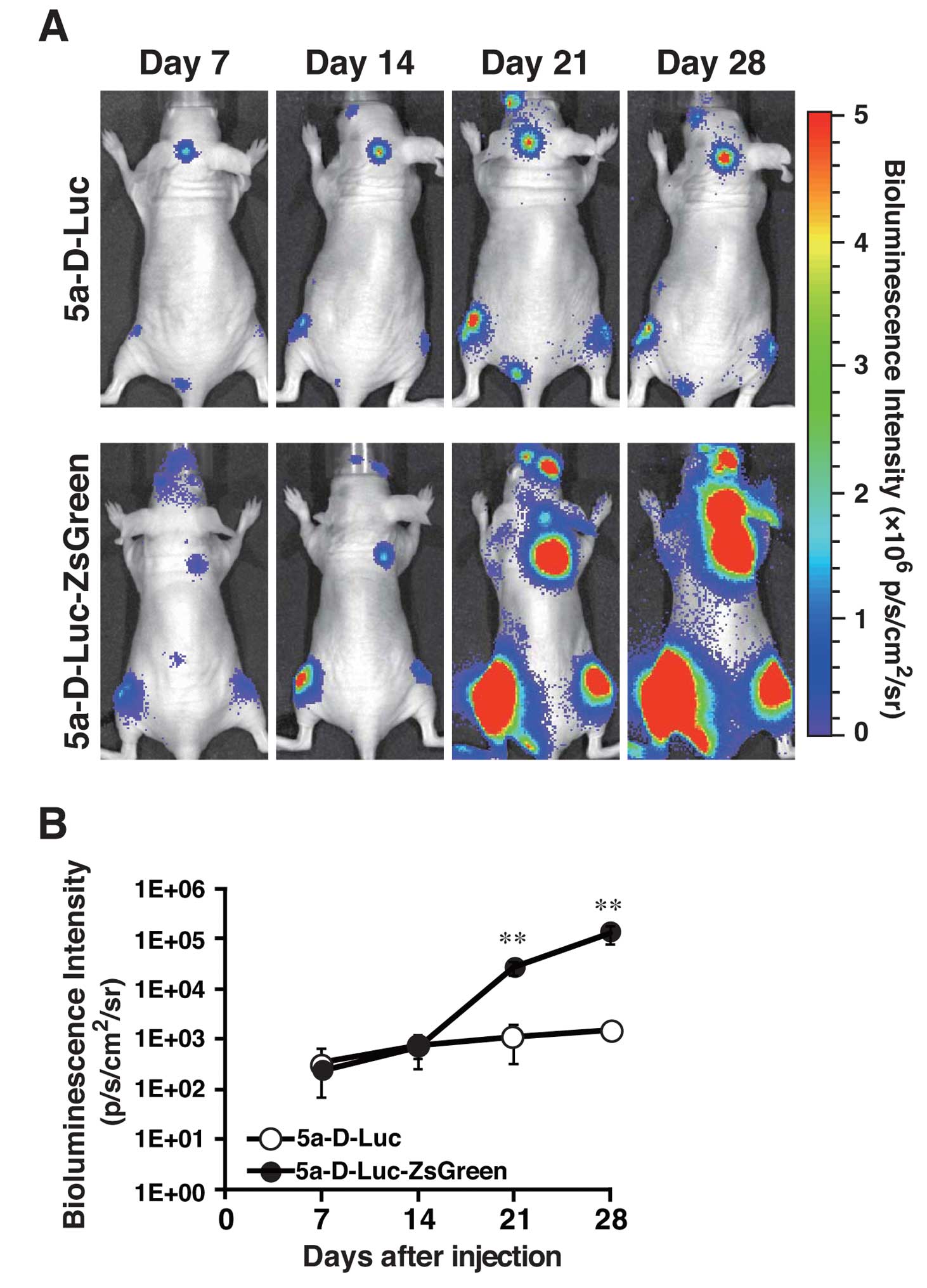Establishment and evaluation of a new highly metastatic tumor cell line 5a-D-Luc-ZsGreen expressing both luciferase and green fluorescent protein
- Authors:
- Published online on: December 18, 2015 https://doi.org/10.3892/ijo.2015.3300
- Pages: 525-532
Metrics: Total
Views: 0 (Spandidos Publications: | PMC Statistics: )
Total PDF Downloads: 0 (Spandidos Publications: | PMC Statistics: )
Abstract
Breast cancer is the most common cancer in women. Although advances in diagnostic imaging for early detection, surgical techniques and chemotherapy have improved overall survival, the prognosis of patients with metastatic breast cancer remains poor. Understanding cancer cell dynamics in the metastatic process is important to develop new therapeutic strategies. Experimental animal models and imaging would be powerful tools for understanding of the molecular events of multistep process of metastasis. In the present study, to develop a new cancer cell line that is applicable to bioluminescence and fluorescence imaging, we transfected the expression vector of a green fluorescent protein ZsGreen1 into a metastatic cell line 5a-D-Luc, which is a subclone of the MDA-MB-231 breast cancer cell line expressing luciferase, and established a new tumor cell line 5a-D-Luc-ZsGreen expressing both luciferase and ZsGreen1. The 5a-D-Luc-ZsGreen cells proliferate more rapidly and have a more invasive phenotype compared with 5a-D-Luc cells following intracardiac injection. Metastasis sites were easily detected in the whole body by bioluminescence imaging and in excised tissues by ex vivo fluorescence imaging. The fluorescence of 5a-D-Luc-ZsGreen cells was not lost after formalin fixation and decalcification. It enabled us to easily evaluate tumor spread and localization at the cellular level in microscopic analysis. The strong fluorescence of 5a-D-Luc-ZsGreen cells allowed for real-time imaging of circulating tumor cells in cerebral blood vessels of live animals immediately after intracardiac injection of cells using two-photon laser-scanning microscopy. These findings suggest that the 5a-D-Luc-ZsGreen cells would be a useful tool for research on mechanisms of metastatic process in animal models.














